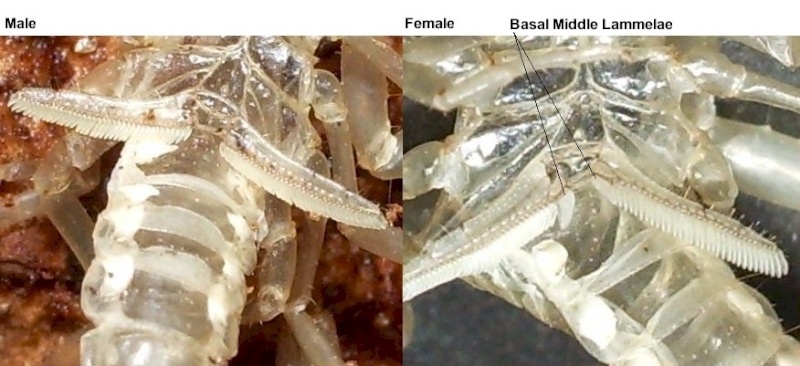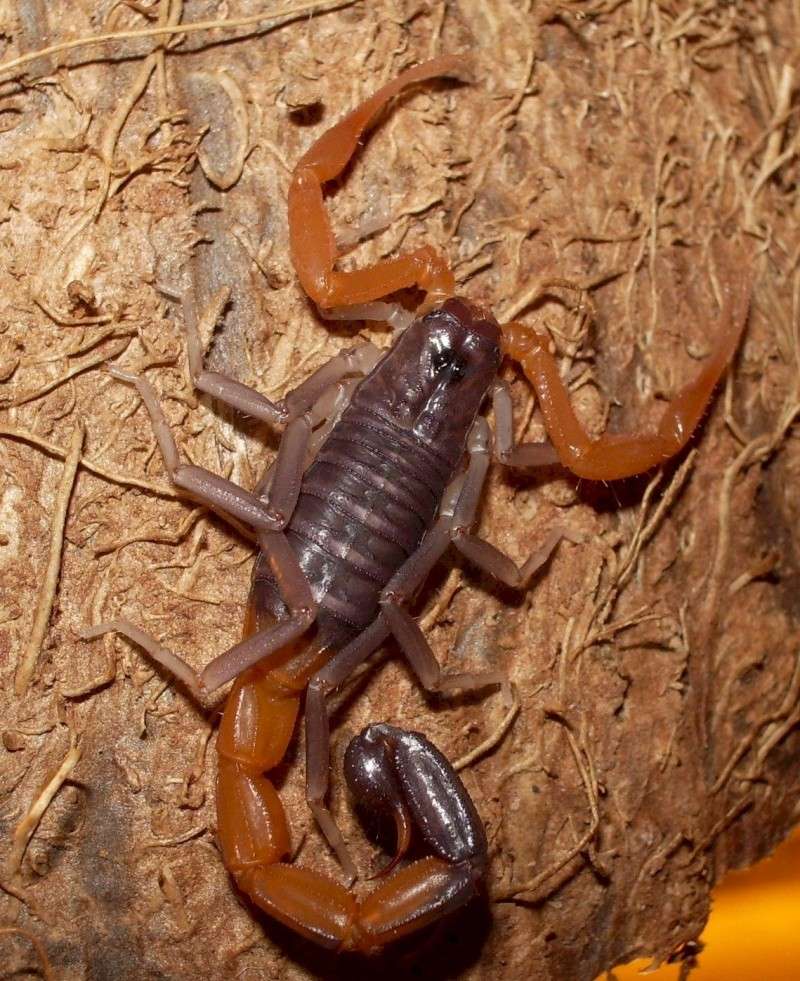These past few months have been a bit of a roller coaster with regards to Grosphus ankarana. I've made a few mistakes, drawn incorrect assumptions and created difficulties where none really existed.
So instead of trying to correct earlier posts i'll start a fresh one, concentrating on what i now believe to be usable information.
Ok, first the basics.
Adult couple housed together on 2nd April
Brood noticed 11th July .. Gestation period approx 100 days (i'm thinking they had probably been born a day or 3 before i noticed them)
Departure from mother 20th July
Amount 38 .. zero mortality
First 2i moult to 3i .. 10th September ... 62 days after birth
Last 2i moult to 3i .. 3rd November ... 55 days from 1st to last
First 3i moult to 4i .. 7th November ... 120 days after birth
Initial environmental parameters for parents .. Parents hot (28-33c) with dry substrate. Occasional water bowl and mistings. No specific regime.
Birthing period .. Moderate (24-27c) no water bowl + no misting.
It seems the young will moult through a variety of temperature and humidity ranges. Higher temps tend to increase the speed of development while lower temps have the opposite affect. The temperature range for a problem free moult lays between 24c and 34c. I had one casualty that died in moult at low temps (21c). I don't know if the low temps where the cause but in lieu of any other explanation i'll stick with it. No scorps moulted at temps higher than 33c although that of course doesn't mean that they couldn't.
Moderate temps are easier to maintain than higher temps so in balance i'm thinking temps around 25-28c with occasional spikes and drops should be ideal for this specie.
Likewise i've had young moult under varying degrees of humidity however here there is a much clearer defined range of preference. Moults have been sporadic and only after long long periods of premoult at lower humidity's (<50%) while humidity around the 65-75% mark sees quicker periods of premoult and less duration between moulting siblings. This degree of humidity is not necessary all the time with dry periods between moults being most probably a normal natural occurrence although it seems to be clearly preferable (and beneficial) during premoult and just after.
With regards to moulting i've observed young moult in the open on the ground and hanging from vertical surfaces. I've also discovered young that have dug scrapes under surface objects, sealed themselves in and then moulted. So here they exhibit quite a varied range of behaviours although it seems moulting on the ground is the dominant form.....Most have moulted during the dark but i've caught a few moulting during the day.
I've also noticed that Grosphus ankarana will eat well for short periods and then fast for longer periods. Premoult can be a lengthy affair even at lower instars and young that you are sure are about to moult can often start eating again if offered..There is also differences between siblings with some eating and developing faster than others although this is true of many, if not all scorpion species to one degree or another...It just seems more pronounced in Grosphus ankarana than it does in many of the other species i've bred..
Sexing Grosphus ankarana is very simple and can be done with a decent loupe already at 2i. Females have the so called Basal Middle Lammelae which is just an oversized, sometimes misformed pectine tooth as the first tooth on the organ.
Instead of stressing the young scorp though i've waited until they moult and then examine the excuvia for gender recognition. The BML can easily be seen on a 2i to 3i excuvia.
So far my young are now tipping 4i. I started with 38 and now have 35. Of the 3 that have died, one died in moult at low temp conditions, one died for no apparent reason and the last died shortly after moult probably because of dehydration.
With their "on/off" approach to moulting you also have to be a bit careful about leaving prey in with them overnight. Here i've erred to the side of caution and will only leave prey in for a few hours if i think they are close to moult. If it's not eaten quickly, it's out again and i'll wait 2 or 3 days before trying again.
Here's a few pictures...
This is a picture of a male / female 2i to 3i excuvia. With a 10x loupe you can easily see the BML if it is there. At a 3i to 4i excuvia you can see the BML without the aid of a loupe (perhaps you youngsters can see it at 2i without a loupe as well

).

Here's a pre moult 2i together with a freshly moulted 3i. These guys were kept communal up until they had all reached 3i without any incident of cannibalism whatsoever. At 3i though they have all been moved over into individual enclosures because i had a notion that some kind of proximity pressure from the other scorps was holding back their development.

And lastly here's a 4i female that moulted 2 days prior to this picture being taken. She still looks as if she's only just crawled out of her old excuvia.


